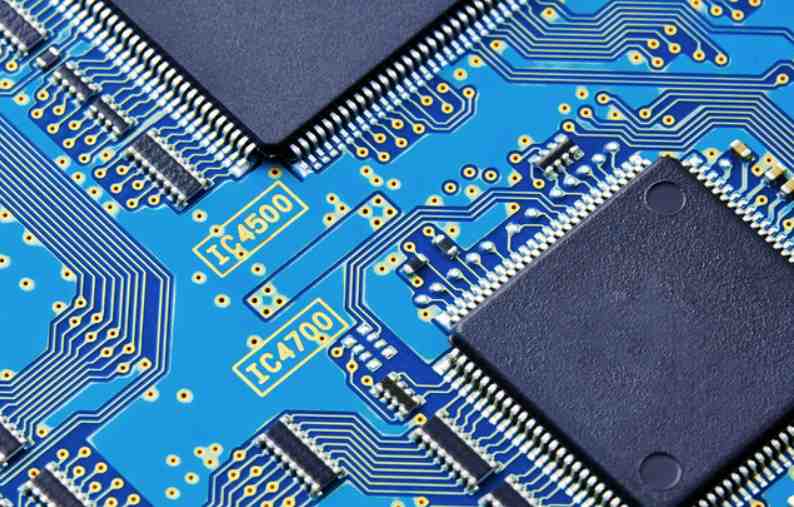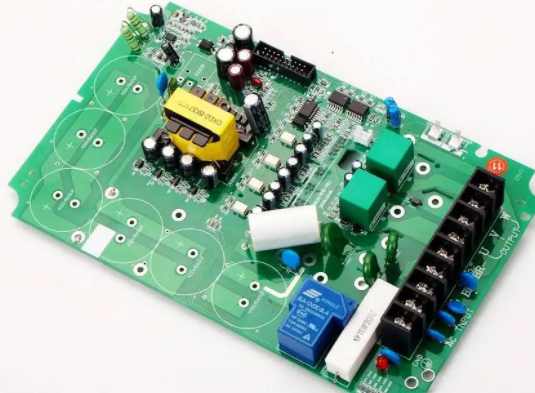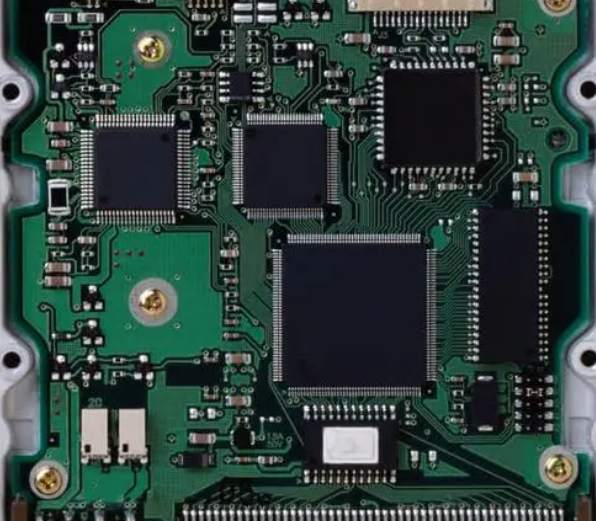
The manufacture of printed circuit boards is very complicated. Take the production process of 4-layer PCB as an example, which requires a new raw material called semi-cured sheet, which is the core board and core board (PCB layer>4) The adhesive between the core plate and the external copper foil also plays an insulating role.
The lower copper foil and two layers of semi-cured sheet are pre-fixed through the alignment hole and the lower iron plate, and then the prepared core plate is also placed into the alignment hole. Finally, the core plate is successively covered with two layers of semi-cured plate, one layer of copper foil and one layer of pressured aluminum plate.
The PCB board, which is clamped by an iron plate, is placed on the bracket and then sent to a vacuum hot press for laminating. The high temperature in vacuum hot pressing melts the epoxy resin in the semi-cured sheet and holds the core plate and copper foil together under pressure.
After laminating, remove the iron plate from the PCB. The pressurized aluminum plate is then removed. The aluminum plate also acts to isolate the different PCBS and ensure the smoothness of the copper foil outside the PCB. At this point, the sides of the PCB will be covered with a layer of smooth copper foil.
To connect the four layers of non-contact copper foil in a PCB, first drill through holes from top to bottom to pass through the PCB, then metallize the hole walls to conduct electricity.
X-ray drilling machines were used to locate the core plate in the inner layer. The machine will automatically find and locate the hole location on the core board and then punch a positioning hole on the PCB to ensure that the next drill hole goes through the center of the hole location.
Place a sheet of aluminum on the punch and place the PCB on top of it. To improve efficiency, one to three identical PCB boards are stacked on top of each other and punched, depending on the number of PCB layers. Finally, the top PCB is covered with an aluminum sheet. The upper and lower layers of aluminum are used to prevent the copper foil on the PCB from tearing when the drill is drilled.
During the previous lamination process, the molten epoxy was extruded from the outside of the PCB, so it needed to be cut off. The copy milling machine cuts the PCB periphery according to the correct XY coordinates.

Chemical precipitation of copper on pore wall
Since almost all PCB designs are connected by perforations with different layer lines, a good connection requires a 25 micron copper film on the hole wall. The thickness of the copper film needs to be achieved by electroplating, but the hole wall is composed of non-conductive epoxy resin and fiberglass board.
Therefore, the first step is to deposit a layer of conductive material on the pore wall and form a 1 micron copper film by chemical deposition on the entire surface of the PCB, including the pore wall. The whole process, such as chemical treatment and cleaning, is controlled by the machine.
Outer PCB layout transfer
Next, the PCB layout of the outer layer is transferred to the copper foil. This process is similar to the previous core board PCB layout transfer principle. The PCB layout is transferred to copper foil through the use of copy film and photosensitive film. The only difference is that the positive will be used as a circuit board.
Internal PCB layout transfer using subtraction, negative film used as board. The circuit covered by the cured photosensitive film on the PCB is the circuit. Clean uncured photosensitive film. After etching the exposed copper foil, the PCB layout circuit is protected by a cured photosensitive film.
External PCB layout transfer using conventional methods, positive as board. The non-line area covered by the cured photosensitive film on the PCB is the non-line area. After cleaning the uncured film, plating should be done. Do not electroplate where there is film. If there is no film, copper should be plated first, then tin. After stripping the film, alkali etching was carried out, and finally destin was carried out. The circuit diagram is left on the board because it is protected by tin.
Clamp the PCB and plate the copper. As mentioned earlier, in order to ensure adequate conductivity at the hole site, the thickness of the copper film plated on the hole wall must be 25 microns, so the entire system will be automatically controlled by a computer to ensure its accuracy.
External PCB etching
Next, a complete automatic pipe completes the etching process. First, clean the cured photosensitive film on the PCB. It is then cleaned of excess copper foil covered with a strong alkali. The tin coating on PCB layout copper foil is then removed with destin solution. After cleaning, complete the 4-layer PCB layout.









